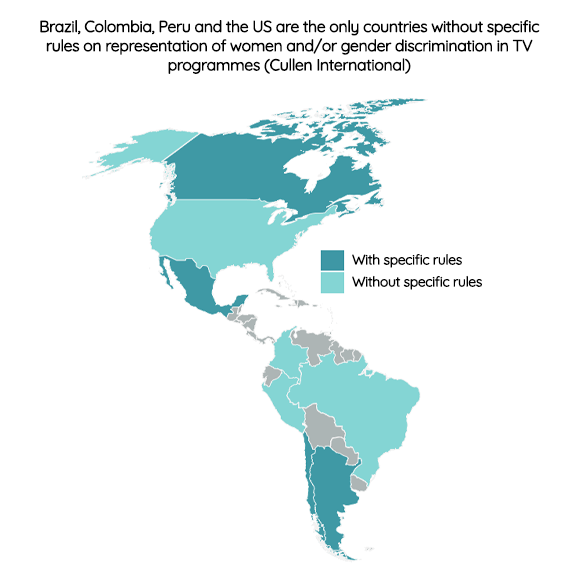A number of countries in the Americas have rules in force that apply to how women are portrayed in media content.
Cullen International’s media benchmark shows for example that:
- Argentina has a comprehensive law on the protection of women that includes a prohibition on the transmitting or rendering of stereotypes, messages or values that tend to “naturalise" the subordination of women. Argentinean media law also forbids discrimination on the basis of gender in advertising.
- Canadian broadcasters are subject to a voluntary industry code, whose observance is closely monitored by government regulators, that forbids the airing of negative portrayals as to gender and other traits, including in advertising.
- Chile and Mexico both enforce specific rules on how women are depicted in television content and forbidding gender discrimination. The rules do not apply to advertising in either country.
Among the eight countries surveyed, only Argentina and Mexico have laws providing for a legal definition of gender equality.

For more information or to access the full benchmark, please, please click on “Access the full content” - or on “Request Access”, in case you are not subscribed to our Americas Media service.
more news
19 December 25
CSRD transposition: Belgium, Denmark, Finland and Slovenia transpose the “stop-the-clock” directive
Cullen International’s updated benchmark tracks the progress made by the 27 EU member states in transposing the CSRD and the related “stop-the-clock” directive.
19 December 25
Global trends in AI regulation
Our latest Global Trends benchmark compares policies and regulations on artificial intelligence (AI) across 14 jurisdictions around the world.
19 December 25
Implementation of European Media Freedom Act: general overview in 12 EU member states
Our new Media benchmark shows if there are initiatives/rules in the selected countries which aim to put into application the EU Media Freedom Act (EMFA). If yes, it describes the scope of the main measures proposed. The benchmark also provides information on the next legislative or regulatory steps.